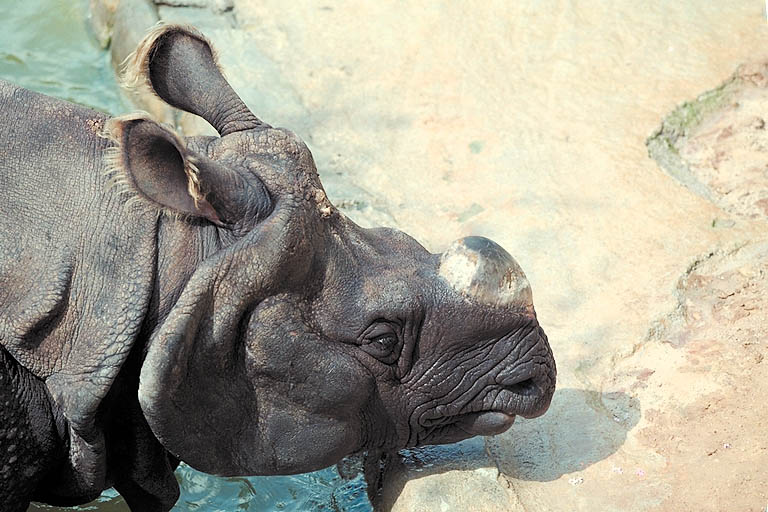
Photo of Fort Worth Zoo Asian Rhino courtesy of Brent A. Thale |
![]() Find
out more about the Asian Rhinos
Find
out more about the Asian Rhinos
|
Greater One-Horned Asian Rhino (historically called the Indian rhino) |
|
Rhinoceros unicornis |
|
Two primary protected areas hold the remaining wild populations; about 450 in Chitwan Park in Nepal and 1200 in Kaziranga Park in Assam, India. Formerly ranging through much of South East Asia, these animals are now confined to the tall grasslands and riverine forests of the Himalayan foothills. |
|
Open and lightly wooded grassland |
|
One of the world most endangered animals, only about 2000 remain in zoos and the wild. |
|
grasses, leaves, as well as random fruits and seeds. These animals do not eat meat. They are herbivores |
|
Browse, grasses, fruits and seeds. |
|
Asian Falls |
| Physical
description:
Generally solitary. Males fight for dominance with razor sharp lower incisors, rather than their horns. Large skin folds around vital areas (neck, genitals, legs) protect critical body parts from serious bite injuries. Can run up to 35 miles per hour in short bursts. They spend much of their day in ponds, streams or mud wallows keeping cool. They defecate in common spots called latrines, sometimes making large rows of manure. |
| General information:
Male dominance is determined by the size and sharpness of the lower incisor teeth rather that by body size or horn size. |
| Comments about
the rhinos of the Fort Worth Zoo.
The Asian rhinos at the Fort Worth Zoo have a pond, water fall, and plenty of room to roam around. They seem to enjoy playing in the water with their big metal cans. |
WhoZoo Home |
This page was created by Christian James.
Email questions and comments toDr.Clark